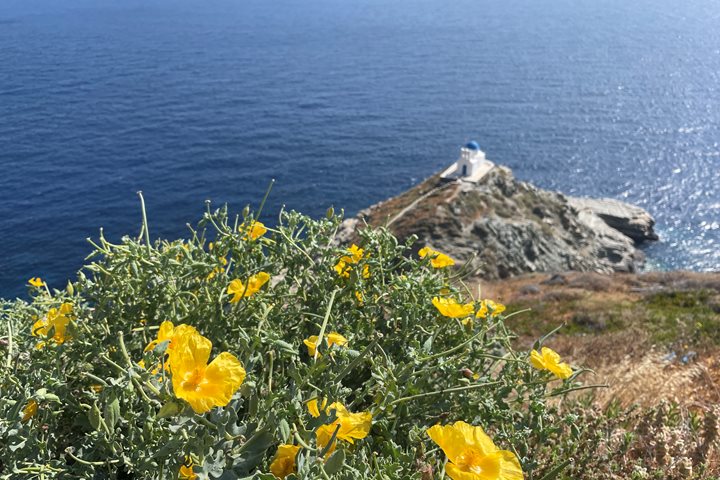At Sea, and the Island of Skyros, Greece
As the sun rose over the eastern horizon, the Sea Cloud was still moving north along the coast of mainland Greece to a point that would afford us the best winds to sail across to Skyros in the freshening northeast winds. After bracing the yards, the crew went aloft at 8:00 a.m. to set all the square sails on the fore, main and mizzenmasts, along with three of the jibs. With the engines off, the steady hum of the engines was soon replaced with unmistakable sound of clicking shutters as we vied for the best vantage point to capture the crew at work aloft in the rigging.
The motion of the ship settled into a steady rhythm as the bow rose and plunged through the sapphire blue waves of the Aegean. Once all the canvas was set we heeled slightly to starboard as the ship glided along at almost six knots – perfect conditions for stretching out in a deck chair to read books, write in journals or banish the lingering effects of jetlag after the trans-Atlantic flights. Three hours later our sail drew to a close just as we finished our safety briefing and staff introductions and approached the coast of Skyros.
Skyros, the birthplace of King Aegeus of Athens and childhood home of the hero of Trojan war, Achilles, is one of the least visited of the Sporades island group. Its 1,000 permanent residents share their island paradise with 2,000 naval and army personnel, their own endemic species of Skyrian pony and 30,000 goats! As the Sea Cloud dropped anchor off the small port of Linaria, the tenders were launched to ferry us ashore for a short bus transfer to the village of Chora.
Chora is nestled high in the hills on the northern half of the island, thus protecting the island’s inhabitants from pirates, which were a constant threat until the mid-19th century. As we climbed up the narrow lanes and footpaths of the village, our senses were assaulted by the heady perfume of bead-bush (Persian lilac tree) and jasmine that seemingly bloomed in every garden.
The more intrepid walkers climbed to the top of the town and down the seaward side to visit the small folkloric museum full of exquisite embroideries and examples of their local copperwares and ceramics. Along the way we visited three tiny orthodox chapels, a private home of a very welcoming older couple and took photos of balconies covered with cascading bougainvillea and whitewashed houses with their brightly colored doors.
Our final stop was a small square near the top of the town where a wonderful group of ladies had laid out morsels of local goat cheese, honey, breads and ouzo for us to sample. The small nosegays of fresh herbs they pressed into all our hands as we left will be wonderful reminders of a simpler way of life and the paths less traveled.






